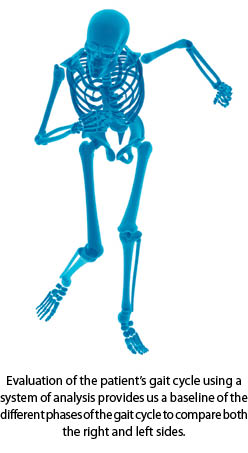The Counterintuitive Formula Your Financial Advisor Doesn’t Know
:dropcap_open:H:dropcap_close:int: It’s not about your loan interest rates. As a financial advocate to Chiropractors, I deal with this issue frequently with my clients. You want to get out of debt so you can reduce your risk, increase your cash flow, and have greater peace of mind, right? Here’s the fastest, safest, and most sustainable way to do it:
 1. Roll Non-Deductible Loan Interest into Deductible Loans
1. Roll Non-Deductible Loan Interest into Deductible LoansAssuming you have enough home equity and good enough credit, refinance your mortgage and roll as much of your non-deductible loans (credit cards, auto loans, etc.) into it as possible. The tax deduction will increase your cash flow.
2. Roll Short-Term, High-Interest Loans into Long-Term, Low-Interest Loans
Again, the goal is to minimize your interest payments and maximize your cash flow. Then, you can attack your remaining debt strategically, using your increased cash flow to eliminate one loan at a time.
CAUTION: Do NOT do this if you’re undisciplined and your spending is out of control. If you’re just going to charge your credit cards back up again, you’ll just sink deeper into debt.
3. Improve Your Credit Score
There’s a smorgasbord of companies and resources to help you do this. By increasing your credit score you get better loan interest rates, which lowers your payments and puts more money in your pocket.
4. The Secret Sauce: Cash Flow Index
Here’s where the rubber hits the road. After minimizing your payments and maximizing your cash flow, you’re now prepared to focus on one loan at a time, thus creating the “snowball effect” until you’re completely debt-free.
Most financial advisors and pundits will tell you to pay off your loans with the highest interest rates first. My advice is to ignore the interest rate and use my Cash Flow Index to determine which debt to pay off first.
To determine your Cash Flow Index, take all your various loan balances and divide each of them by their respective payments. Whichever one has the lowest number is the one you should pay off first.
For example:
|
Home Loan Balance: $228,000
Interest Rate: 7%
Monthly Payment: $1,665
Cash Flow Index: 137
($228,000 ÷ $1,665)
|
Credit Card Balance: $13,000
Interest Rate: 12%
Monthly Payment: $260
Cash Flow Index: 50 |
|
Auto Loan Balance: $16,500
Interest Rate: 8%
Monthly Payment: $450
Cash Flow Index: 37
|
Student Loan: $107,000
Interest Rate: 3.9%
Monthly Payment: $650
Cash Flow Index: 165 |
In this example, it seems to make sense to pay off the credit card first because it has the highest interest rate. But the Cash Flow Index reveals that the auto loan should be paid off first.
The trick is to pay off debt that gives you the greatest cash flow with the least investment. A high Cash Flow Index means your loan balance is high relative to the payment, while a low Cash Flow Index means your balance is low but with a high payment. Knock out those high payments first and you free up cash to work on other debts.
In this case, by paying off the auto loan first, you free up more monthly cash, which can then be applied toward the credit card balance. Paying off the auto loan first means you can pay off both faster than if you started with the credit card.
5. Address the Risk Factor
This strategy isn’t just about paying off debt faster—it’s also about reducing your risk. Banks and other financial institutions tell you to pay off debts that lessen their risk while increasing yours. For instance, if you put more equity into your home, you are still at risk for being foreclosed on if you can’t make a payment. In fact, they may be more willing to foreclose if you have more equity in your home.
The rule here is to not directly pay down loans that keep you in the same payment (as opposed to loans for which the payment reduces as you pay them down). Rather, save the money that you would have paid on the loan balance in a separate account until you have enough to pay off the loan in full.
In those types of loans, you’re worsening your Cash Flow Index with every payment. It doesn’t give you immediate benefit, and it increases your risk by reducing your liquidity.
6. Get to the Roots
As I explain in my book, Killing Sacred Cows, without a fundamental change in consciousness regarding debt, none of these strategies will work long-term. You need to identify and solve the root causes of debt, rather than hacking at the byproducts (interest and bondage) with nothing but techniques.
Before you employ these techniques, ask yourself questions like these:
- Why did I incur each of my debts? What was the purpose? Was my desire to consume or to produce?
- When I incurred debt, how did I justify it?
- Do I seek consolation in material things? If so, what could replace the feelings I receive from borrowing to purchase material things?
- Was my debt caused by gambling—putting money into things I didn’t understand and couldn’t control? If so, what can I learn from this and how can I be wiser in the future?
Getting—and staying—out of debt requires a fundamental shift in outlook and behavior. You must change who you are, then what you do flows from that change. If you’re struggling with debt, focus on increasing your knowledge, improving your mindset, and developing your character. The practical solutions to your debt problem will naturally follow.
Garrett Gunderson is a financial advocate and the author of the New York Times, Wall Street Journal, USA Today, and Amazon bestseller Killing Sacred Cows: Overcoming the Financial Myths that are Destroying Your Prosperity.
 When we conduct our evaluation and management of a patient, we benefit from a thorough history based on a review of the patient’s case history or other admitting information that we request the patient to fill out. This is followed with a one-on-one consultation to review the case history where we ask additional questions to further assist our decision making. This history covers the requirements of chief complaint, history of present illness, review of the symptoms and past family and social history.
When we conduct our evaluation and management of a patient, we benefit from a thorough history based on a review of the patient’s case history or other admitting information that we request the patient to fill out. This is followed with a one-on-one consultation to review the case history where we ask additional questions to further assist our decision making. This history covers the requirements of chief complaint, history of present illness, review of the symptoms and past family and social history. 

 Under that section, the CMS answers a few potential questions you may have. One of them is: “Will CMS conduct audits?” The answer is clear: “Any provider attesting to receive an EHR incentive payment for either the Medicare EHR Incentive Program or the Medicaid EHR Incentive Program may potentially be subject to an audit.” And then they explain how to be prepared for an audit. In the best case scenario, where you do your very best to meet all the conditions, where you keep your documentation at the best of your knowledge and where you keep your office legally crystal clear, an audit is never fun.
Under that section, the CMS answers a few potential questions you may have. One of them is: “Will CMS conduct audits?” The answer is clear: “Any provider attesting to receive an EHR incentive payment for either the Medicare EHR Incentive Program or the Medicaid EHR Incentive Program may potentially be subject to an audit.” And then they explain how to be prepared for an audit. In the best case scenario, where you do your very best to meet all the conditions, where you keep your documentation at the best of your knowledge and where you keep your office legally crystal clear, an audit is never fun. 
 After 34 years of consistent service to the chiropractic profession through her work here at the magazine, on March 29th, 2012, TAC Editor Jean Marie Irelan Busch made the transition leaving us with the honor of carrying on her legacy.
After 34 years of consistent service to the chiropractic profession through her work here at the magazine, on March 29th, 2012, TAC Editor Jean Marie Irelan Busch made the transition leaving us with the honor of carrying on her legacy.  Jeanie graduated from South Whitley High School, achieving the high scholastic rank of Salutatorian of her class and went on to graduate from Indiana University in 1966 with a Bachelor of Arts degree in Grammar and Theater. While at Indiana University Jeanie was a member of the Delta Gamma Sorority, was captain of the pom pom cheerleaders, taught for the National Cheerleaders Association, and was on various Indiana University steering committees, including Little 500 etc. and the I.U. Foundation. Many who have known Jeanie remember her boisterous laugh, beautiful smile, positive love of life and comforting, silent strength that those around her could sense whenever she was present.
Jeanie graduated from South Whitley High School, achieving the high scholastic rank of Salutatorian of her class and went on to graduate from Indiana University in 1966 with a Bachelor of Arts degree in Grammar and Theater. While at Indiana University Jeanie was a member of the Delta Gamma Sorority, was captain of the pom pom cheerleaders, taught for the National Cheerleaders Association, and was on various Indiana University steering committees, including Little 500 etc. and the I.U. Foundation. Many who have known Jeanie remember her boisterous laugh, beautiful smile, positive love of life and comforting, silent strength that those around her could sense whenever she was present.  Jeanie was also active in civic and sorority matters. In Fort Wayne, Indiana, Jeanie was active in Career Day for kids and established the category Homemaker, which was previously missing from the choices. Also, at one time she was the leader of four Brownie Troops. She was instrumental in leadership and giving her time to help her family and others with continued support for her husband in his many endeavors.
Jeanie was also active in civic and sorority matters. In Fort Wayne, Indiana, Jeanie was active in Career Day for kids and established the category Homemaker, which was previously missing from the choices. Also, at one time she was the leader of four Brownie Troops. She was instrumental in leadership and giving her time to help her family and others with continued support for her husband in his many endeavors. In 1978, Jeanie was called on to sell advertising in The American Chiropractor. She did so under the pseudonym Tracy Leigh. She sold an ad over the telephone on her first call! She was also one of the original editors for The American Chiropractor Magazine, with a meticulous eye for grammatical mistakes and a passion for commas, as her family liked to joke. When not editing, she was also selling advertising to many of the same companies that have become prominent supporters of the profession. From that point in 1978, Jeanie was never far away from all aspects of The American Chiropractor Magazine. When not directly involved in the delivery of the content, you could find her working on some other aspect of the magazine.
In 1978, Jeanie was called on to sell advertising in The American Chiropractor. She did so under the pseudonym Tracy Leigh. She sold an ad over the telephone on her first call! She was also one of the original editors for The American Chiropractor Magazine, with a meticulous eye for grammatical mistakes and a passion for commas, as her family liked to joke. When not editing, she was also selling advertising to many of the same companies that have become prominent supporters of the profession. From that point in 1978, Jeanie was never far away from all aspects of The American Chiropractor Magazine. When not directly involved in the delivery of the content, you could find her working on some other aspect of the magazine.
 1. Roll Non-Deductible Loan Interest into Deductible Loans
1. Roll Non-Deductible Loan Interest into Deductible Loans In a perfect world, the peer review doctor would render an opinion on the paperwork that certifies necessary care and covered issues for injured patients. Peer review differs from an IME in that there is no face-to-face meeting with the patient and no examination. The peer review doctor reviews the paperwork of the treating doctor to see if that doctor practiced within the standards of his/her license and renders an opinion about the necessity for care.
In a perfect world, the peer review doctor would render an opinion on the paperwork that certifies necessary care and covered issues for injured patients. Peer review differs from an IME in that there is no face-to-face meeting with the patient and no examination. The peer review doctor reviews the paperwork of the treating doctor to see if that doctor practiced within the standards of his/her license and renders an opinion about the necessity for care. 
 Donald D. Harrison, DC, PhD, MSE, (also known as Deed by his family and early life friends) passed away 2 months ago on Wednesday, July 20th, 2011. He was 65 years old residing in Wyoming with his loving wife Dr. Sang Harrison. Due to complications from Type II Diabetes, he passed peacefully with his wife Sang, his son Deed, and his daughter Holly by his side.
Donald D. Harrison, DC, PhD, MSE, (also known as Deed by his family and early life friends) passed away 2 months ago on Wednesday, July 20th, 2011. He was 65 years old residing in Wyoming with his loving wife Dr. Sang Harrison. Due to complications from Type II Diabetes, he passed peacefully with his wife Sang, his son Deed, and his daughter Holly by his side. 
 At the ceremony, which attracted more than 1,000 attendees, Dr. Clum promised that would be the last advice he’d ever give to Dr. Kelly, with a wink and a chuckle. But all joking aside, the enthusiasm at Life West Wave Conference was contagious. The event attracted students and prospective students, alumni and individuals from all corners of the world.
At the ceremony, which attracted more than 1,000 attendees, Dr. Clum promised that would be the last advice he’d ever give to Dr. Kelly, with a wink and a chuckle. But all joking aside, the enthusiasm at Life West Wave Conference was contagious. The event attracted students and prospective students, alumni and individuals from all corners of the world.

 Be honest. Have you ever had a patient that required more than a routine workup but you used a lower level exam code because you knew they had no insurance coverage? Perhaps a 99202 instead of a 99203? No big deal right?
Be honest. Have you ever had a patient that required more than a routine workup but you used a lower level exam code because you knew they had no insurance coverage? Perhaps a 99202 instead of a 99203? No big deal right? 
 If you are thinking about transforming your clinic into a multidisciplinary practice — one that offers multiple healthcare and healing professions and disciplines in one legal entity — you cannot afford to be misinformed. Misinformation can lead to noncompliance. And noncompliance is something you do not want to happen.
If you are thinking about transforming your clinic into a multidisciplinary practice — one that offers multiple healthcare and healing professions and disciplines in one legal entity — you cannot afford to be misinformed. Misinformation can lead to noncompliance. And noncompliance is something you do not want to happen.

 :dropcap_open:Y:dropcap_close:ou can forgive Americans for being caught off guard by talk of the potential for more dramatic price increases in the coming years. For the past two decades, inflation has not been a significant concern. In only six years out of the last 20 has the inflation rate (as measured by the Consumer Price Index) turned in more than even a modest annual increase of 3 percent. By contrast, in the prior 20-year period, prices rose by more than 3 percent annually in all but one year. Annual price increases topped 12 percent in three different years during the late 1970s and early 1980s.
:dropcap_open:Y:dropcap_close:ou can forgive Americans for being caught off guard by talk of the potential for more dramatic price increases in the coming years. For the past two decades, inflation has not been a significant concern. In only six years out of the last 20 has the inflation rate (as measured by the Consumer Price Index) turned in more than even a modest annual increase of 3 percent. By contrast, in the prior 20-year period, prices rose by more than 3 percent annually in all but one year. Annual price increases topped 12 percent in three different years during the late 1970s and early 1980s.